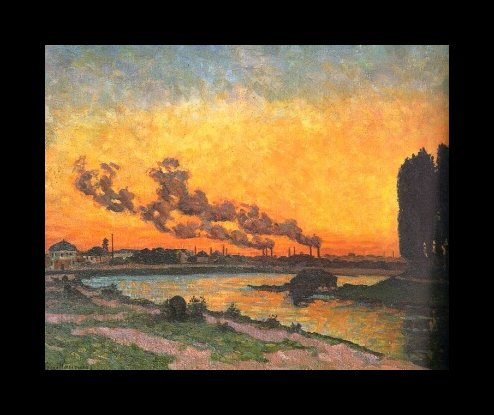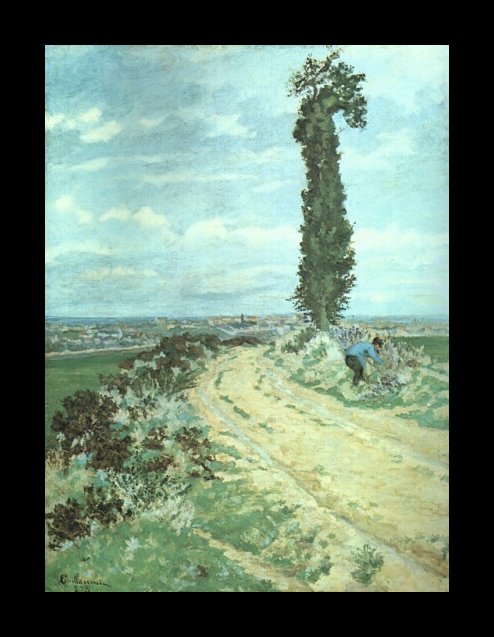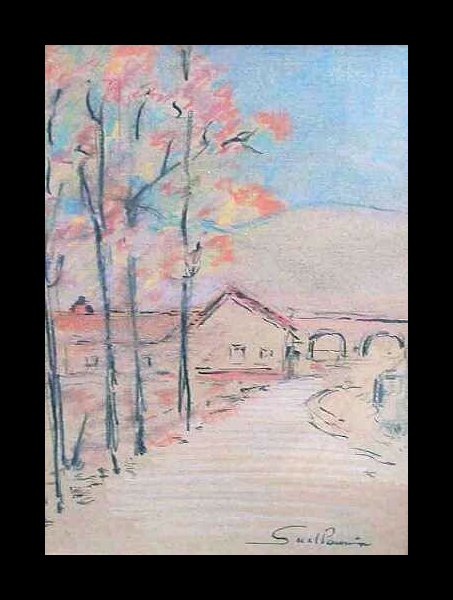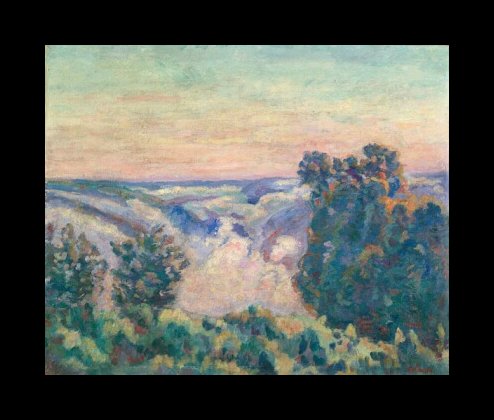Jean Baptise Armand Guillaumin (1841-1927)
Get a Guillaumin Certificate of Authenticity for your painting or a COA for your Boucher drawing or print.
For all your Guillaumin artworks you need a Certificate of Authenticity in order to sell, to insure or to donate for a tax deduction.
How to get a Guillaumin Certificate of Authenticity is easy. Just send us photos and dimensions and tell us what you know about the origin or history of your Guillaumin painting, drawing or print.
If you want to sell your Guillaumin painting, drawing or print use our selling services. We offer Guillaumin selling help, selling advice, private treaty sales and full brokerage.
We have been authenticating Guillaumin and issuing certificates of authenticity since 2002. We are recognized Guillaumin experts and Guillaumin certified appraisers. We issue COAs and appraisals for all Guillaumin artworks.
Our Guillaumin paintings, drawings and print authentications are accepted and respected worlwide.
Each COA is backed by in-depth research and analysis authentication reports.
The Guillaumin certificates of authenticity we issue are based on solid, reliable and fully referenced art investigations, authentication research, analytical work and forensic studies.
We are available to examine your Guillaumin painting, drawing or print anywhere in the world.
You will generally receive your certificates of authenticity and authentication report within two weeks. Some complicated cases with difficult to research Guillaumin paintings or drawings take longer.
Our clients include Guillaumin collectors, investors, tax authorities, insurance adjusters, appraisers, valuers, auctioneers, Federal agencies and many law firms.
We perform Jean Baptise Armand Guillaumin art authentication, appraisal, certificates of authenticity (COA), analysis, research, scientific tests , full art authentications. We will help you sell your Jean Baptise Armand Guillaumin or we will sell it for you.
Jean Baptiste Armand Guillaumin was an artist who produced Impressionist paintings and lithographs. He was particularly well known for his landscape paintings of the Paris, Creuse and Esterel regions. He was born in Paris to a working class family who had recently moved there from the Bourbonnais region in France. At the age of fifteen, he started working for his uncle, who owned a lingerie shop. In the evenings, he spent his time attending drawing classes.
He later on attended the Academy of the painter Charles Suisse in Paris where he met the artists Cezanne and Pissarro. He was to make friends with them, and remained so for the rest of his life. He changed his working life to allow himself more time to dedicate himself to his love of art. He began night work at the Highways department which allowed him to paint during the day.
He had a strong interest in painting the lives of the working class in Paris and was particularly interested in depicting the spaces they inhabited. He was drawn towards portraying the new residential and industrial areas of the expanding Paris of the day.
In the beginning of the 1870s, he worked with Pissarro in the village of Pointoise. He shared Pissarro’s love of landscapes and working with Pissarro enabled him to perfect and develop his art of landscape painting. A particularly well known painting from this time entitled, ‘Sunset at Ivry,’ hangs in the Musee d’Orsay. Together with Pissarro he frequently visited Dr Paul Gachet in Auvers. Dr Gachet was a Socialist and ‘Free Thinker’ of the time who had close links with the Impressionists of the day. Whilst in Auvers, Pissarro completed a portrait of Guillaumin entitled, Guillaumin at the Hanged Man.



Guillaumin was to go on to become very good friends with Vincent Van Gogh, who of course also had strong connections with Dr Gachet. Van Gogh’s brother Theo also sold a number of paintings by Guillaumin. He became a frequent visitor at the Cafe Guerbois in Bagnitolles, where all the of the Impressionist painters of the time met to discuss the politics of the day and of course their art. He formed part of the first group of Impressionist artists to exhibit at the Impressionist exhibition of 1874. He was also to exhibit at a number of subsequent Impressionist exhibitions.
In 1886, Guillaumin married his cousin who was a schoolteacher and she gave him a lot of financial support which enabled him to pass more of his time concentrating on his painting. In 1891, he had an extraordinary stroke of good luck and he won the National Lottery. This enabled him to devote himself entirely to his painting and he spent time traveling and painting in the South of France as well as in Holland.
In the 1890s, he began using more expressive colours and this has led some Art Certification Experts to state that in some of his paintings of this period he was anticipating the Fauves movement. He produced many colour works at this time such as, ‘Ruins in Crozat.’
Whilst Guillaumin never attained the stature of Cezanne and Pissarro, he certainly influenced them, for example Cezanne attempted his first etching based on a Guillaumin painting of barges on the Seine.
Paintings by Guillaumin can be seen all over the world, including in the National Gallery of Art in Washington and the Hermitage Museum in St. Petersburg.


Reviews
1,217 global ratings
5 Star
4 Star
3 Star
2 Star
1 Star
Your evaluation is very important to us. Thank you.
